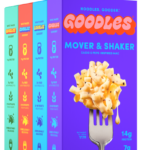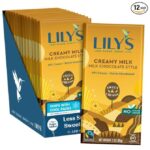25 Marketing Truths and The Fragrance of Sage
I am not a guru.
The Marketing Sage was a clever name for my consultancy because I primarily work with food and beverage companies, and I love the herb sage. When my girls were little, we rubbed sage leaves together and smelled the fragrance. Sage also means wisdom from experience. I turned 71 on January 23, 2025, so I have a smidge of sagacity from my years on the planet.
After decades of watching brands soar and stumble, below are twenty-five marketing insights and observations that I have learned through five decades. These sage ideas aren’t from me sitting on a hilltop in mediation. As a leader, participant, and observer, I have been part of many great teams and projects.
Here are 25 Marketing Truths I have learned.
1. The Goldilocks Zone of Innovation
Customers want something new to be interesting but familiar enough to be comfortable. Think evolutionary, not revolutionary. The iPhone wasn’t the first smartphone, but it was the first one that made sense.
2. The Memory Anchor
People remember the first and last moments of any experience disproportionately—Obsess your opening and closing touches. Everything else is the middle act.
3. The Paradox of Prestige
Your premium customers don’t want you to be everywhere. Scarcity isn’t just about limited editions – it’s about limited visibility. The finest restaurants don’t have billboards; they have whispers.
4. The Anti-Echo Chamber
Stop surveying your existing customers about what new customers want. They’re already converts. It’s like asking priests what atheists think about church.
5. The Authenticity Trap
Being authentic doesn’t mean showing everything. It means consistently showing the right things. A chef doesn’t invite you into their messy kitchen—they plate the experience.
6. The Reverse Positioning Play
Sometimes, embracing your perceived weakness becomes your strength. Avis didn’t just acknowledge being 2; they weaponized it. “We try harder” turned market position into motivation.
7. The Friction Friendship
Not all friction is insufficient. Sometimes, making things harder creates value. Exclusive credit cards are heavy metal because weight equals worth in our primitive brains.
8. The Challenger’s Advantage
Market leaders must defend everything, while challengers can pick their battles. Being one means not losing; being two means playing to win.
9. The Narrative Nemesis
Every brand needs an enemy. It might be a competitor, a problem, or a status quo. Without conflict, there’s no story. Tesla’s enemy wasn’t other cars – it was gasoline.
10. The Price Perception Paradox
Customers don’t buy on price; they buy on perceived value differential. A $5 coffee isn’t expensive if it makes you feel like a $100 version of yourself.
11. The Category Creation Imperative
Don’t fight for market share in an existing category. Create a new one where you’re the only player. Red Bull didn’t enter the soda market; they created the energy drink market. Olipop is a new type of soda- better for you.
12. The Selective Amnesia Strategy
Sometimes, the best marketing move is to help customers forget what they know. Uber didn’t improve taxis; they made us forget everything we knew about getting a ride.
13. The Metaphor Matrix
The brands that win aren’t selling products; they’re selling metaphors. Harley Davidson doesn’t sell motorcycles; they sell rebellion in chrome and leather.
14. The Cognitive Load Limit
Every feature you add dilutes your message. Your product isn’t a Swiss Army knife; it’s a surgeon’s scalpel. Cut with precision.
15. The Experience Echo
Customer experience isn’t what happens during the sale but what customers tell others afterward—design for the story, not just the service.
16. The Contrast Principle
Your brand is defined as much by what you aren’t. Clarity comes from contrast. Southwest Airlines succeeded by being an anti-airline airline. IKEA became the furniture store that didn’t put your furniture together for you.
17. The Velocity Vector
Speed to market matters less than speed to meaning. It is better to be third to market with the right story than first with no story.
18. The Cultural Currency Exchange
Successful brands don’t just ride cultural waves; they create cultural currency. They give people something to talk about besides features and benefits.
19. The Coherence Quotient
Brand consistency isn’t about repetition; it’s about resonance. Every touchpoint should feel like it came from the same universe, not just the same brand guide.
20. The Permission Principle
Don’t ask what you can sell to your customers; ask what your customers permit you to sell. Amazon earned the right to sell everything by mastering books first.
21. The Temporal Territory
Own a moment in your customer’s day, week, or year. Monopolize a mood. Red Bull owns the 3 PM slump. Hallmark owns the emotional calendar. Mid-Day Squares owns – mid-day snacking.
22. The Signal-to-Noise Ratio
In a world of infinite content, silence becomes a luxury. Sometimes, the most powerful marketing message is no message at all. Think Rolls-Royce’s quiet cabin campaign.
23. The Ritual Requirement
Great brands create rituals, not just transactions. Corona owns the lime-in-the-bottle ritual. It’s not about taste; it’s about tradition.
24. The Cognitive Shortcut
Make your brand a decision-making shortcut. In a world of infinite choice, brands that simplify decisions win. Kleenex means tissue. Ollipop means healthy soda.
25. The Legacy Loop
Your brand isn’t what you leave behind; it’s what you pass forward. Design for an inheritance, not just immediate impact. The best brands, like fine wine or family recipes, improve with time.
Marketing isn’t just about making noise; it’s about making meaning. And I have been tracking what separates the extraordinary from the ordinary. In a world drowning in information but starving for wisdom, these principles aren’t just strategies but survival skills.
25 Marketing Truths – Making Sense of Sage
For those foodies who are interested, this is how I describe the fragrance of sage.

Sage’s aroma is complex and distinctive. It has a strong, earthy base with pronounced camphor-like notes, similar to eucalyptus but warmer and more mellow. There’s also a subtle piney quality mixed with hints of mint and citrus. The overall fragrance is warm, slightly peppery, and herbaceous.
What makes sage particularly interesting is its balance between sharp and soft notes. While it has an initial bright, almost medicinal quality, this is rounded out by deeper, more savory undertones that can be described as musty or almost leathery. This complexity is why sage works so well both in culinary applications and in traditional practices like smudging.
When the leaves are rubbed or crushed, the aroma becomes more intense and releases additional volatile oils, bringing out stronger menthol-like notes while maintaining that characteristic earthy warmth.
What’s your favorite herb and/or insight about brands and marketing?
What did I miss? Can you add other insights to my 25 Marketing Truths?
Photo by Ashes Sitoula on Unsplash
Connect with Jeff at The Marketing Sage Consultancy. Interested in setting up a call with me? Use my calendly to schedule a time to talk. The call is free, and we can discuss your brand and marketing needs.
If you want to learn more about my new offering, The Trusted Advisor Board, you can click here to learn the details. Feel free to email me at jeffslater@themarketing sage.com or text 919 720 0995. Thanks for your interest in working with The Marketing Sage Consultancy.





